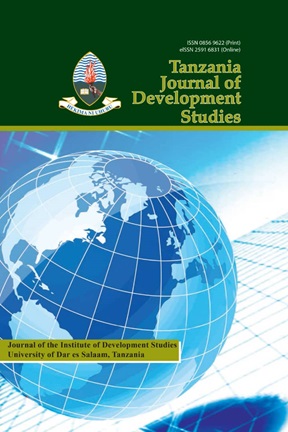Gendered Determinants of Vulnerability to Food Insecurity in Chamwino District, Tanzania
Abstract
Chamwino District is vulnerable to food insecurity, but the extent of such vulnerability differs with household headship. However, gendered determinants of vulnerability to food insecurity remain to be explored. This paper is based on a study which was conducted in Chamwino District using a cross-sectional research design involving 400 households. Using multiple linear regression, amount of food stored and reducing meal size significantly influenced (p < 0.05) FHHs ' vulnerability to food insecurity, while amount of food stored, total annual income per adult equivalent, distance to the nearest market place, reducing size of the meal and income generating activities significantly influenced (p < 0.05) MHHs ' vulnerability to food insecurity. The findings suggest that factors which determine vulnerability to food insecurity vary across gender. Therefore, interventions to reduce vulnerability to food insecurity in Chamwino District should focus on gender issues and markets within reach of farm households, among other things. Radical transformation of rural areas in order to create off-farm employments is recommended, and use of food storage structures in rural areas would help reduce vulnerability to food insecurity. Key words: food insecurity, gender, vulnerabilityDownloads
Published
2021-12-08
Issue
Section
Articles


